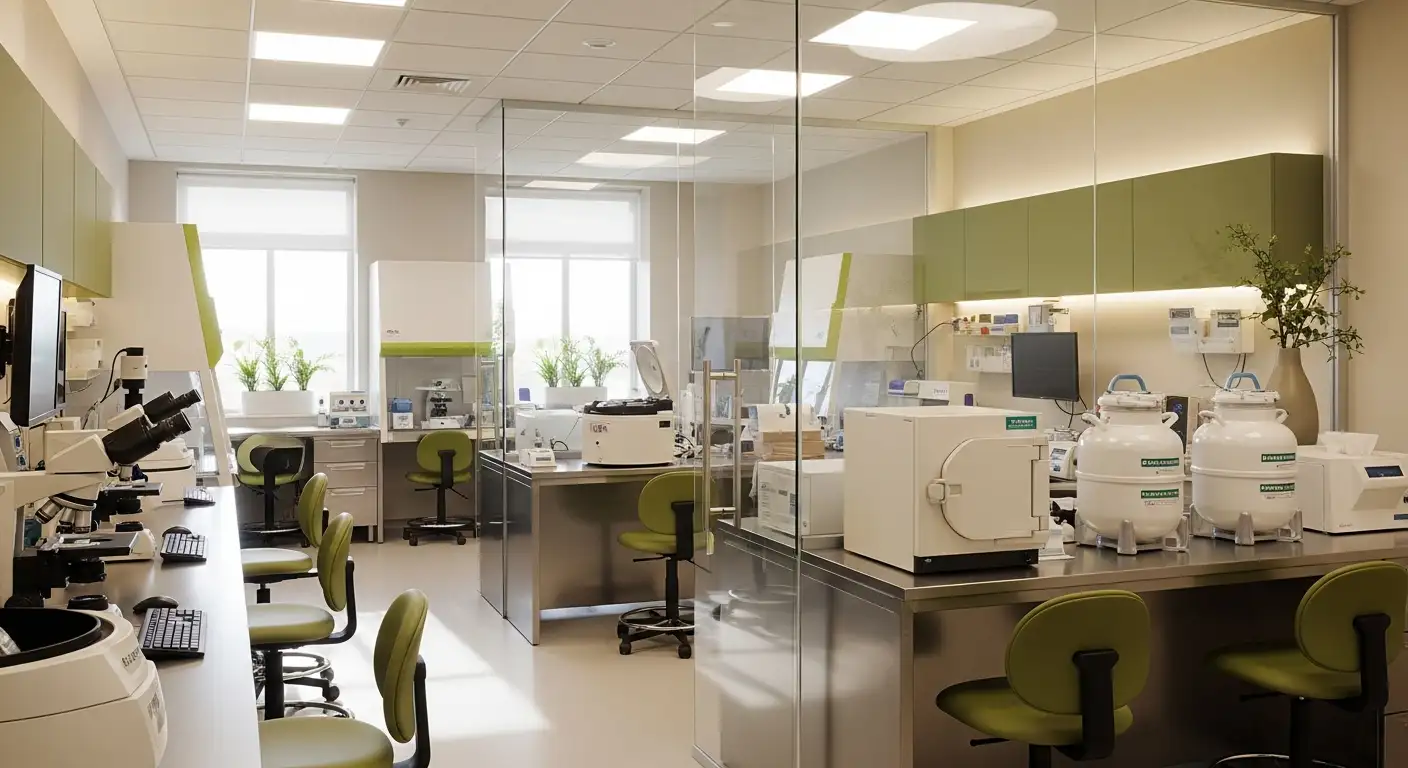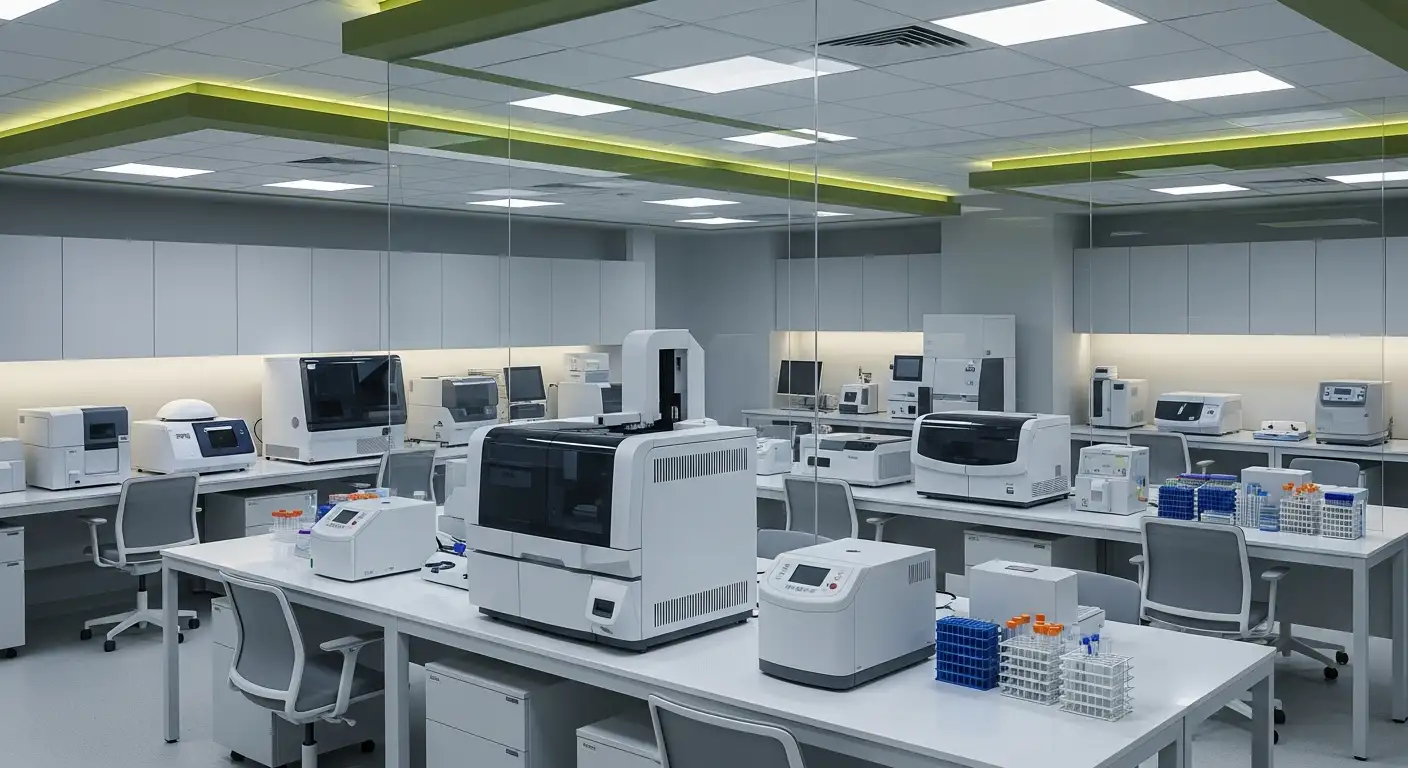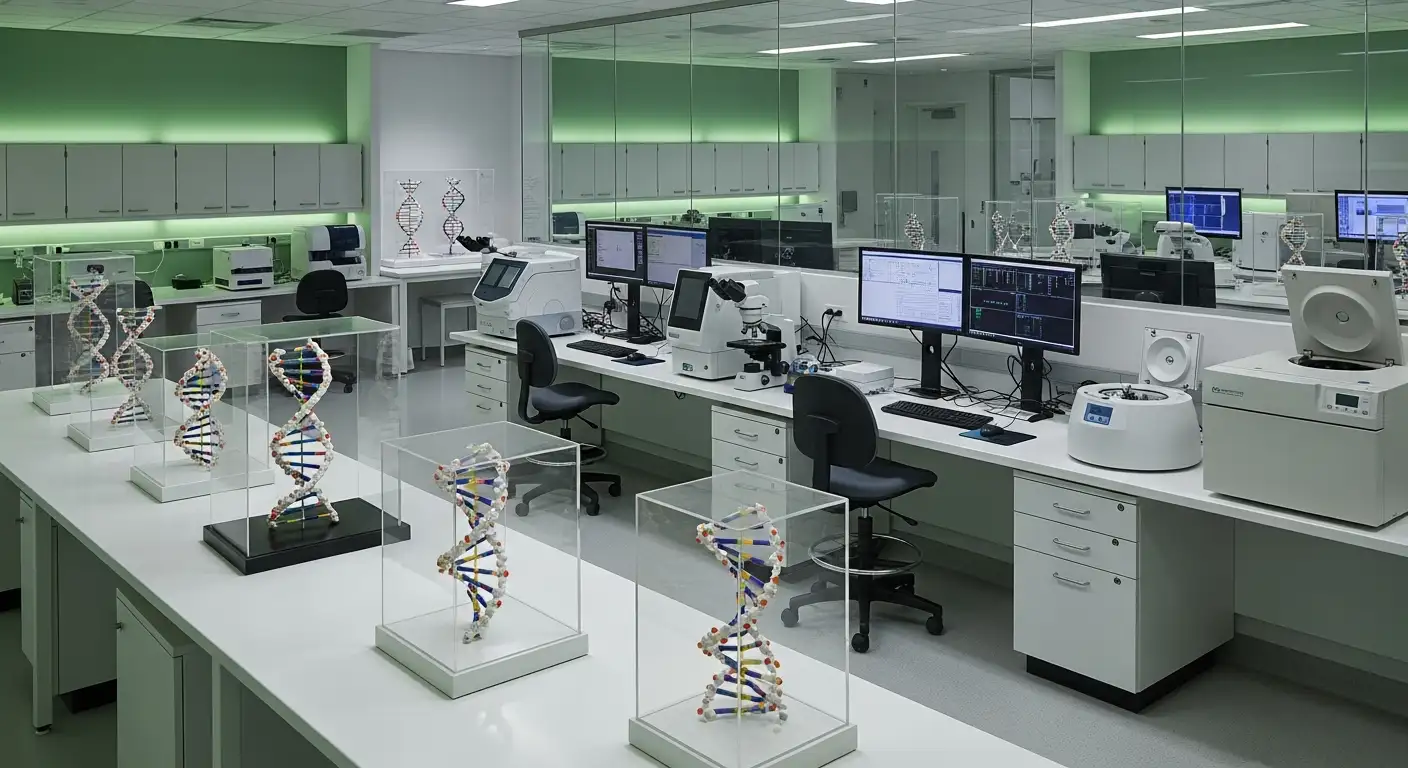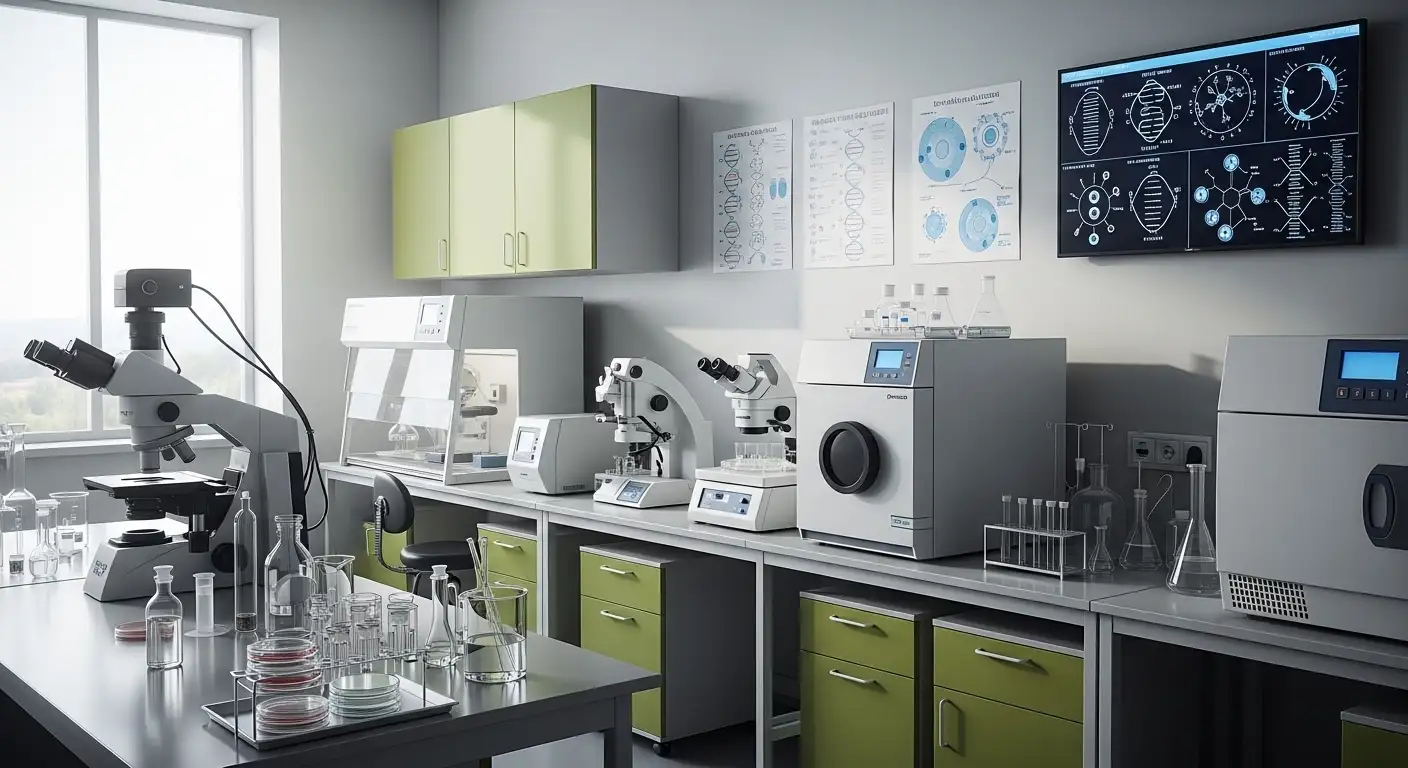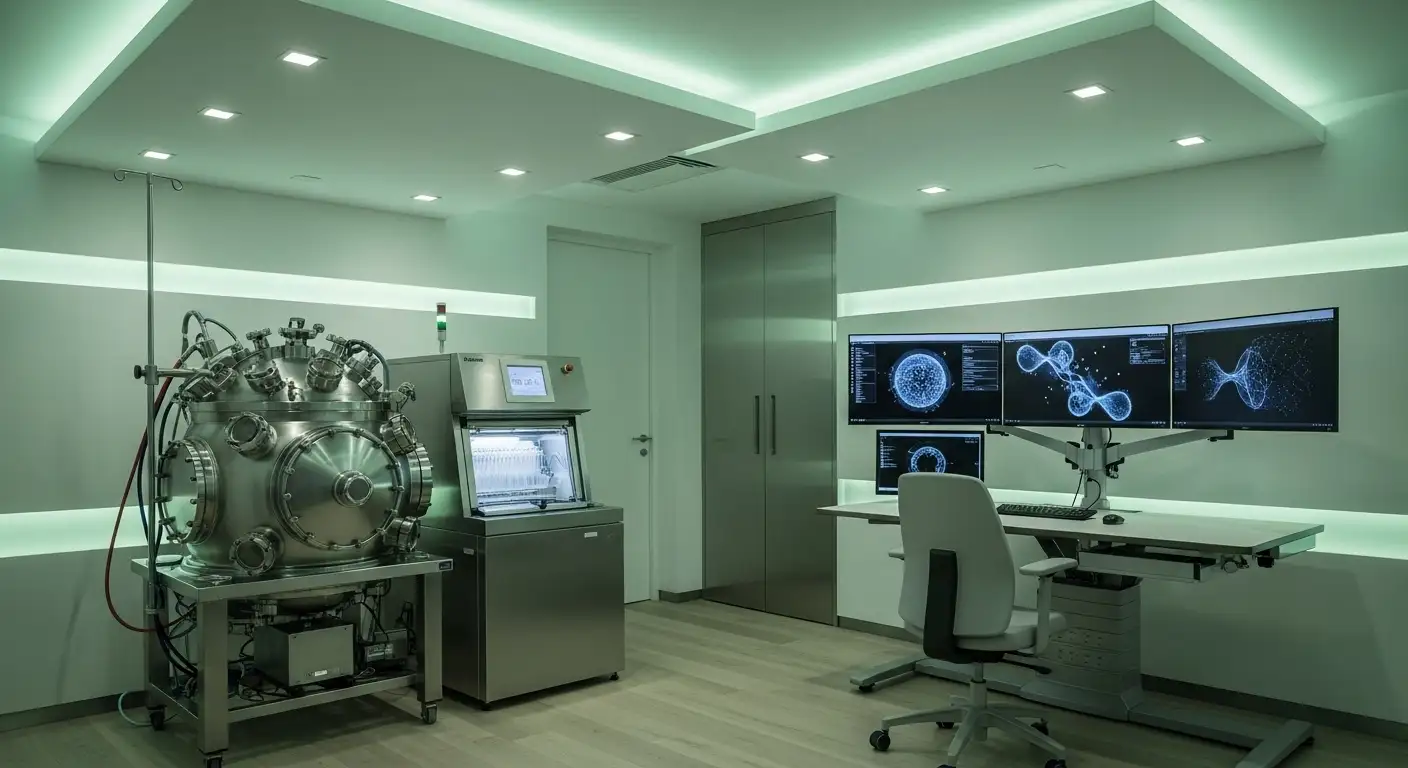How embryo genetic testing (PGT) supports healthy pregnancies
Advancing Reproductive Success with Genetic Insights

Understanding How PGT Enhances Pregnancy Outcomes
Preimplantation genetic testing (PGT) has emerged as a vital component in assisted reproductive technology (ART), offering promising avenues for identifying healthy embryos before implantation. By analyzing embryos at early developmental stages, PGT helps in selecting those with the highest chance of resulting in successful, healthy pregnancies. This article explores the different types of PGT, their purposes, how they work, their benefits in fertility treatments, and the scientific evidence supporting their use, all aimed at supporting healthier pregnancies and reducing genetic risks.
What is embryo genetic testing (PGT) and how does it work?
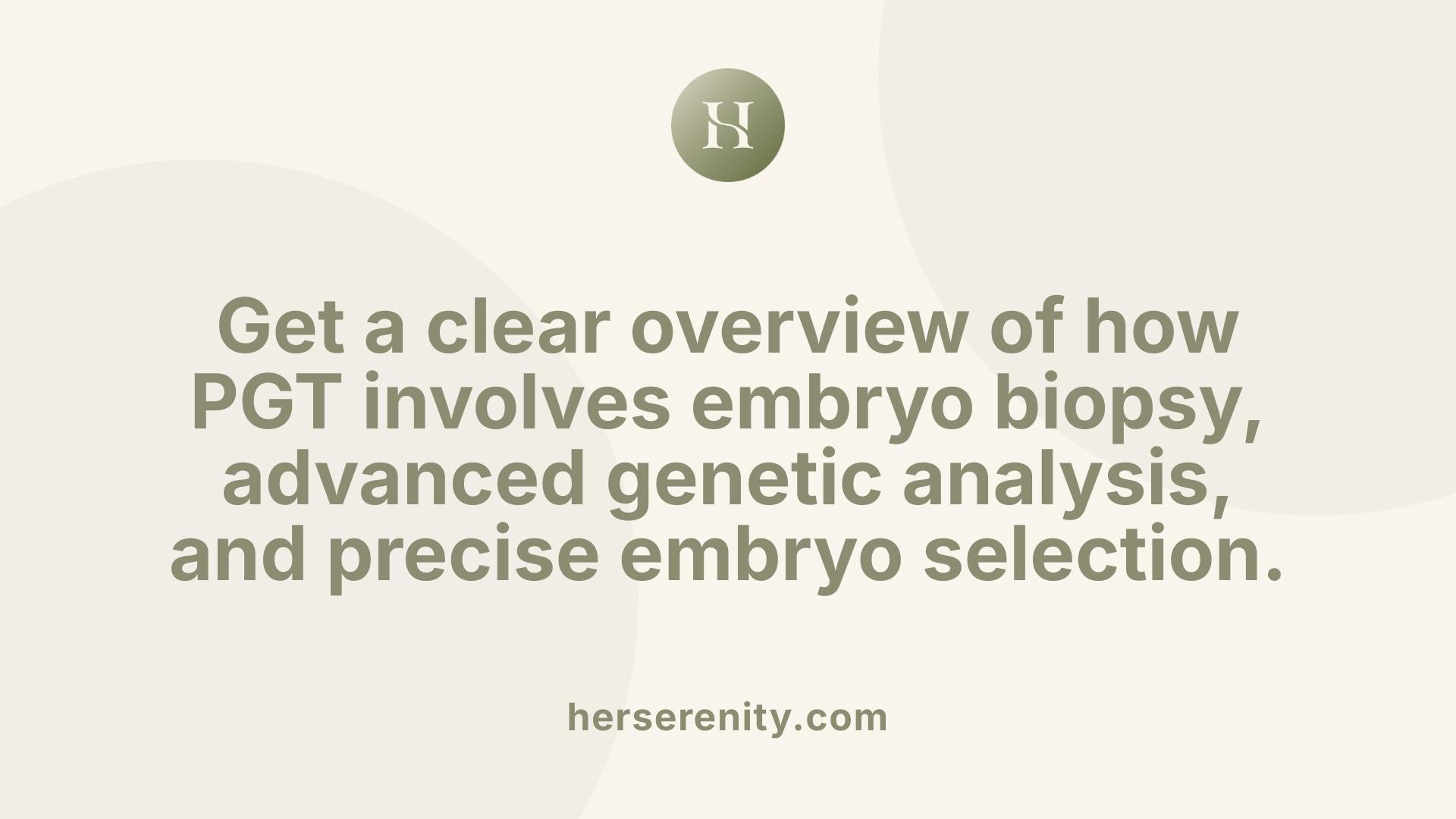 Preimplantation genetic testing (PGT) is a procedure performed during in vitro fertilization (IVF) to analyze small samples of cells from developing embryos for genetic and chromosomal abnormalities before transfer to the uterus. This testing allows fertility specialists to select embryos with the highest likelihood of resulting in healthy pregnancies.
Preimplantation genetic testing (PGT) is a procedure performed during in vitro fertilization (IVF) to analyze small samples of cells from developing embryos for genetic and chromosomal abnormalities before transfer to the uterus. This testing allows fertility specialists to select embryos with the highest likelihood of resulting in healthy pregnancies.
There are different types of PGT, including PGT-A, PGT-M, and PGT-SR. PGT-A screens for aneuploidy, which involves missing or extra chromosomes that are common causes of miscarriage and genetic disorders such as Down syndrome. PGT-M targets specific inherited genetic disorders like cystic fibrosis or Huntington’s disease. PGT-SR examines structural chromosome rearrangements, such as translocations or inversions, which can also impact pregnancy success.
The process begins with fertilizing eggs through IVF and growing the resulting embryos until they reach the blastocyst stage, typically around day 5 or 6 of development. At this point, a small number of cells are carefully biopsied from each embryo’s outer layer, the trophectoderm. This biopsy is performed with minimal invasiveness, often using advanced techniques to avoid damaging the embryo.
Once the cells are collected, they are sent to a specialized laboratory for genetic analysis. Modern techniques like next-generation sequencing (NGS) are commonly used due to their high precision and ability to detect a range of genetic abnormalities. Some laboratories also utilize technologies like array comparative genomic hybridization (aCGH) or single nucleotide polymorphism (SNP) arrays.
Results from the genetic analysis usually take about 1-2 weeks. Embryos with healthy genetic profiles—such as euploid (normal chromosome number)—are then selected for transfer. This selection significantly improves the likelihood of implantation, reduces miscarriage risk, and supports healthier pregnancy outcomes.
In summary, PGT involves embryo biopsy at the blastocyst stage, advanced genetic analysis, and careful selection of embryos for transfer, all aimed at increasing the success rates of IVF and ensuring healthier pregnancies.
What are the different types of embryo genetic testing and their purposes?
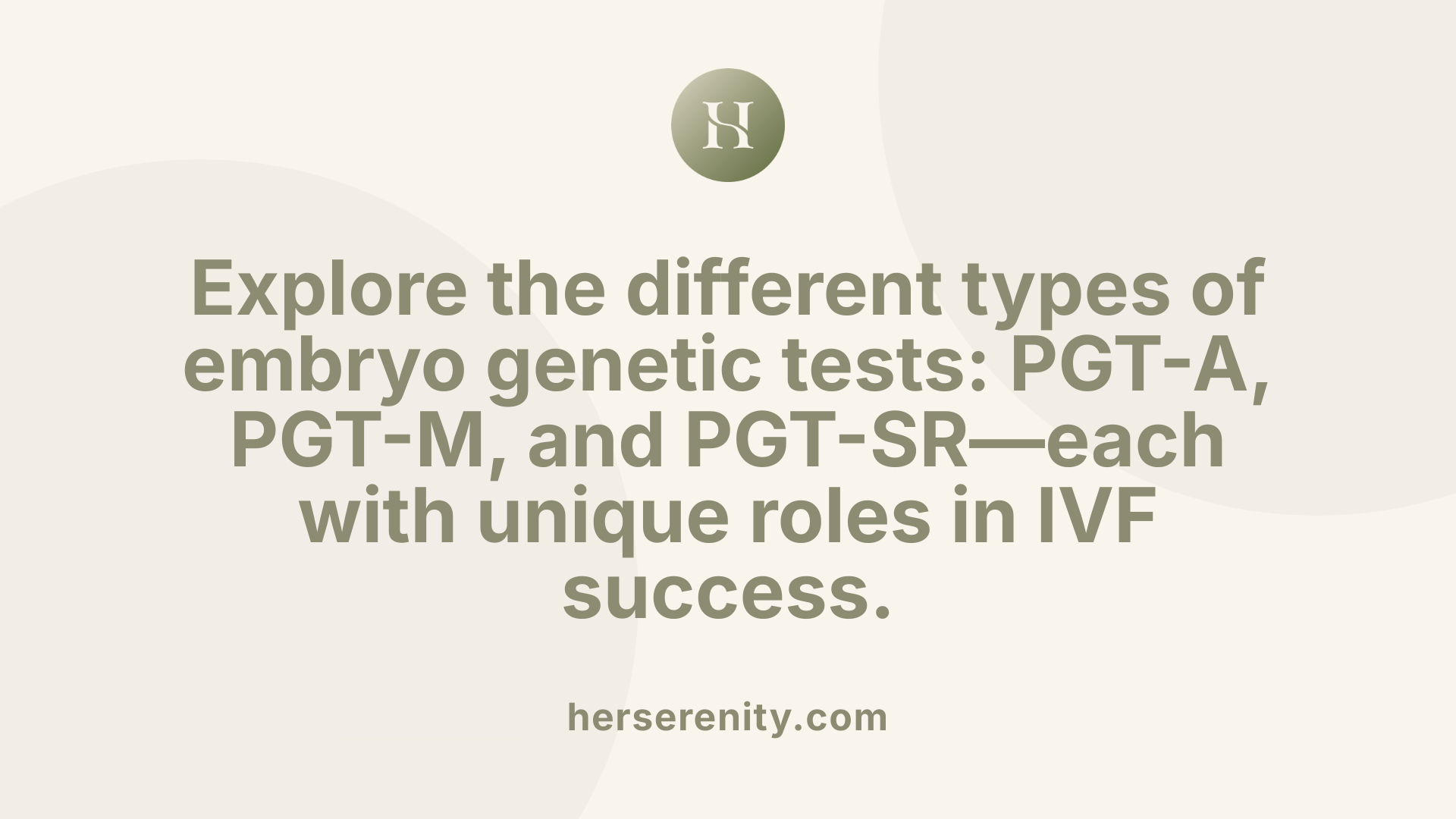 Preimplantation genetic testing encompasses various techniques aimed at assessing embryos for chromosomal and genetic health before transfer during IVF treatments.
Preimplantation genetic testing encompasses various techniques aimed at assessing embryos for chromosomal and genetic health before transfer during IVF treatments.
The main forms are PGT-A, PGT-M, and PGT-SR, each with distinct goals and applications.
Overview of PGT-A, PGT-M, PGT-SR
- PGT-A (Preimplantation Genetic Testing for Aneuploidy) focuses on counting chromosomes to identify embryos with the correct number of chromosomes (euploid). This reduces the chances of miscarriage and conditions such as Down syndrome, particularly valuable for older women or those with repeated pregnancy losses.
- PGT-M (Preimplantation Genetic Testing for Monogenic Disorders) targets specific genes to detect single-gene mutations that cause hereditary diseases like cystic fibrosis, Huntington's disease, and Tay-Sachs disease. It helps couples known to carry genetic disorders.
- PGT-SR (Preimplantation Genetic Testing for Structural Rearrangements) screens for structural anomalies such as translocations, inversions, or deletions in parental chromosomes, preventing miscarriage due to chromosomal structural issues.
Goals of Each Test
| Test Type | Primary Purpose | Key Conditions Detected | Technical Approach |
|---|---|---|---|
| PGT-A | Select healthy embryos with normal chromosomes | Aneuploidies like trisomy 21 (Down syndrome), monosomy | Chromosomal counting via aCGH, NGS |
| PGT-M | Detect specific inherited genetic mutations | Monogenic disorders like cystic fibrosis, Huntington's | Direct gene testing, linkage analysis |
| PGT-SR | Identify structural chromosome anomalies | Translocations, inversions | Karyomapping, CMA |
Conditions Detected by Each Test
- PGT-A detects numerical chromosomal abnormalities, reducing the risk associated with aneuploidies.
- PGT-M screens for particular genetic mutations inherited from carriers.
- PGT-SR highlights structural abnormalities that can cause implantation failure or pregnancy loss.
By utilizing these testing types, clinicians can more effectively select embryos with the highest potential for healthy pregnancy and prevent transmission of genetic disorders, offering couples significant reassurance and improved reproductive outcomes.
How does PGT improve IVF success rates?
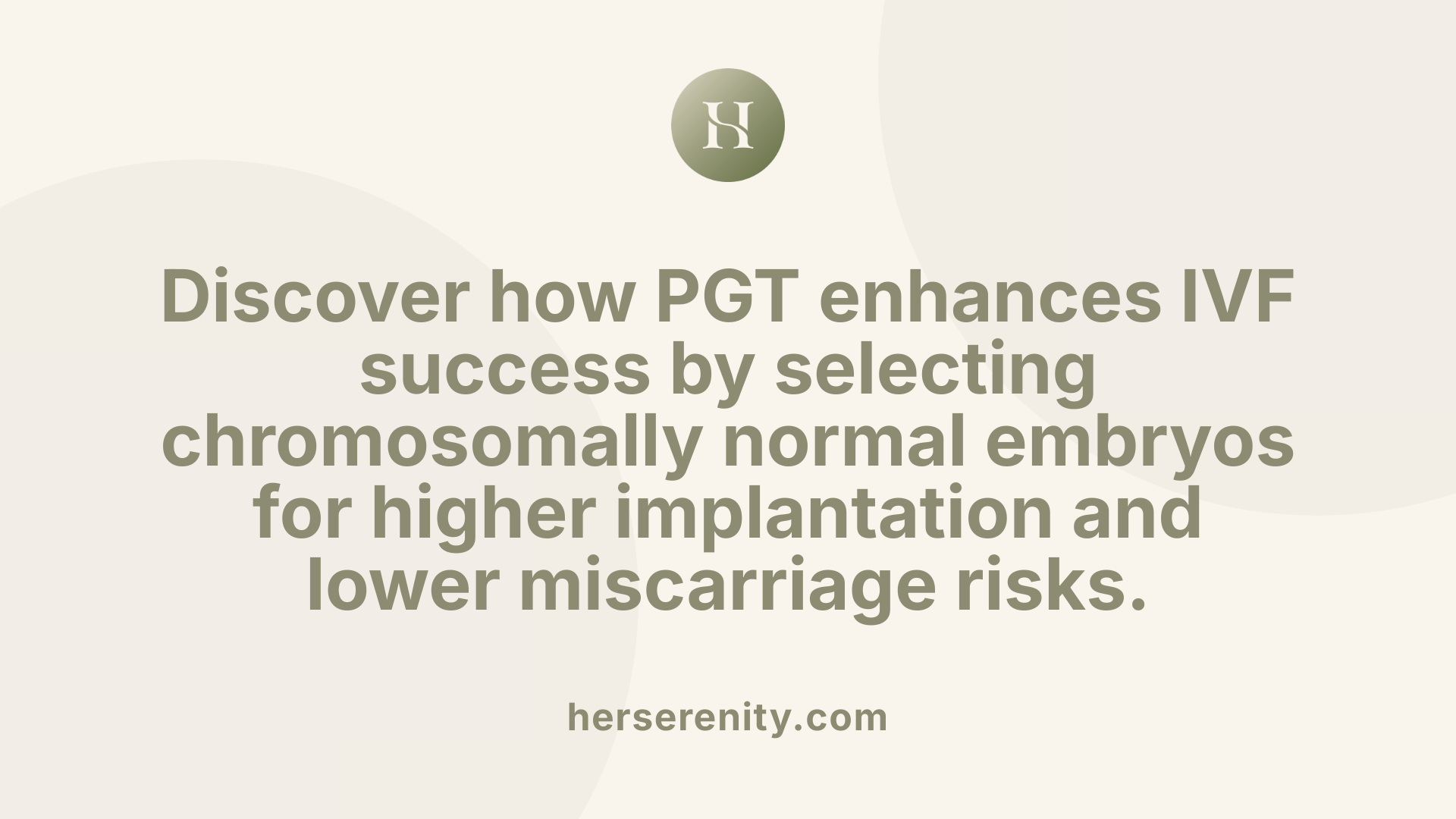 Preimplantation Genetic Testing (PGT) significantly enhances the chances of a successful IVF outcome by enabling precise selection of healthy embryos. This process involves analyzing the chromosomes of embryos at the blastocyst stage, typically 5-6 days after fertilization, using advanced techniques such as next-generation sequencing (NGS) or array comparative genomic hybridization (aCGH). By identifying embryos with the correct number of chromosomes—known as euploid embryos—fertilization specialists can select those most likely to implant successfully.
Preimplantation Genetic Testing (PGT) significantly enhances the chances of a successful IVF outcome by enabling precise selection of healthy embryos. This process involves analyzing the chromosomes of embryos at the blastocyst stage, typically 5-6 days after fertilization, using advanced techniques such as next-generation sequencing (NGS) or array comparative genomic hybridization (aCGH). By identifying embryos with the correct number of chromosomes—known as euploid embryos—fertilization specialists can select those most likely to implant successfully.
This targeted approach reduces the transfer of aneuploid (chromosomally abnormal) embryos, which are often responsible for failed implantation and miscarriage. As a result, the risk of miscarriage is lowered, and the probability of pregnancy becomes higher. Moreover, with the selection of chromosomally normal embryos, the chances of ongoing pregnancy and live birth are greatly improved.
PGT’s effectiveness is particularly notable for women of advanced maternal age, as the likelihood of chromosomal abnormalities increases with age. For these women, PGT diminishes the impact of age-related embryo mosaicism and aneuploidy, offering a better chance at a healthy pregnancy.
Multiple studies have shown that combining PGT with frozen embryo transfer (FET) cycles yields better outcomes than standard IVF without genetic testing. This includes higher implantation and live birth rates, as selecting the most viable embryo optimizes the entire process.
In sum, PGT refines embryo selection, reduces the transfer of genetically compromised embryos, and increases the success probabilities of IVF, helping more couples achieve healthy pregnancies and live births.
What are the benefits of embryo genetic testing in fertility treatments?
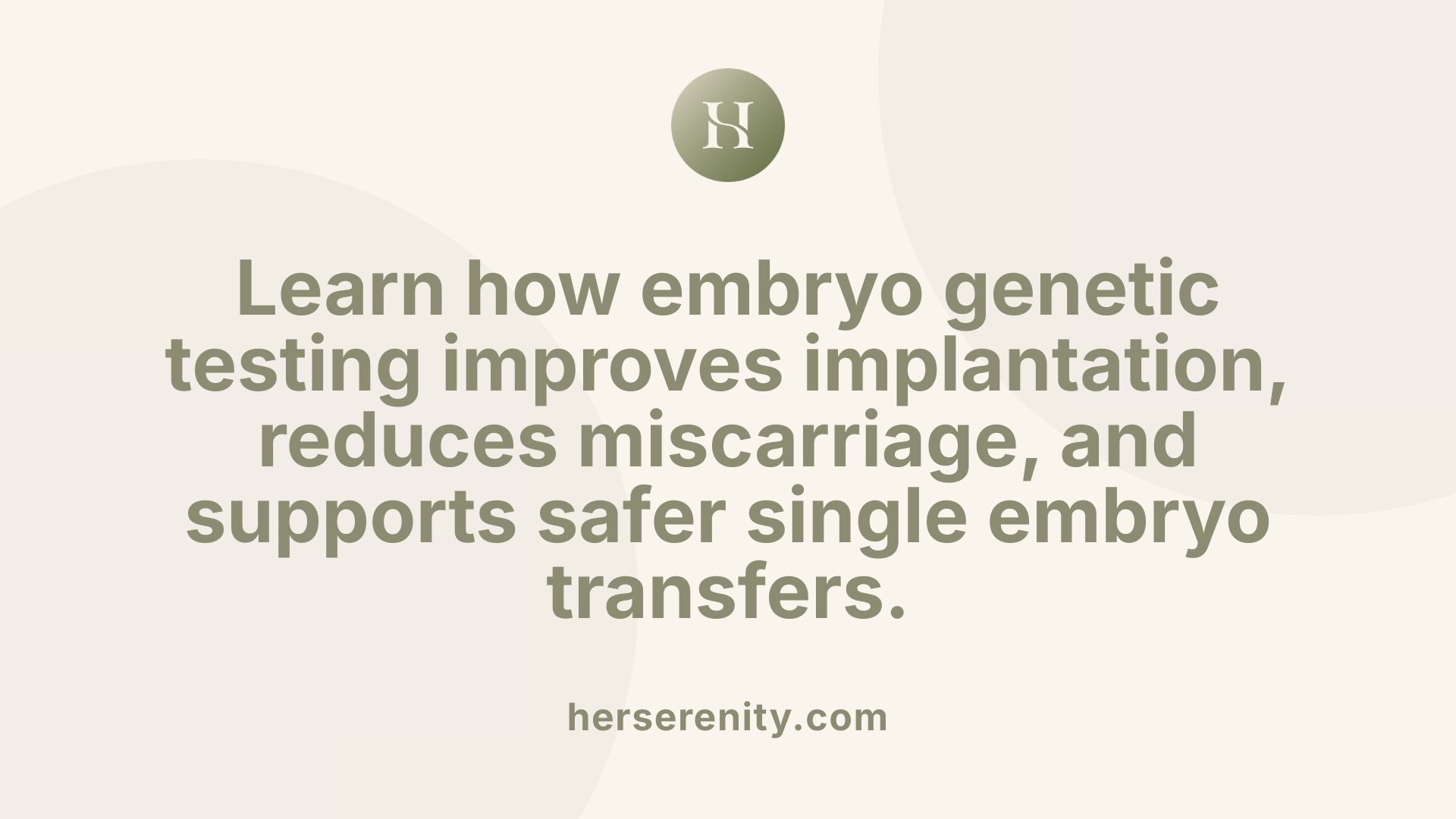
How does embryo genetic testing increase implantation success?
Embryo genetic testing, especially PGT-A, helps identify embryos with the correct number of chromosomes, also known as euploid embryos. These embryos have a higher chance of successful implantation because they are less likely to have genetic abnormalities that impede development.
By selecting only chromosomally normal embryos for transfer, fertility specialists can significantly improve the chances of establishing a pregnancy. Studies show that using PGT-A can boost implantation rates, leading to more pregnancies from fewer embryo transfers.
How does genetic testing reduce miscarriage rates?
Chromosomal abnormalities are a leading cause of miscarriage. Many embryos with aneuploidy—an abnormal number of chromosomes—fail to implant or result in early pregnancy loss.
Preimplantation genetic testing enables the selection of embryos with normal chromosome complements, thereby lowering the likelihood of miscarriage. This focused selection helps couples who have experienced recurrent pregnancy loss or unexplained miscarriages find a greater chance of carrying a pregnancy to term.
In what ways does genetic testing support single embryo transfer?
Single embryo transfer (eSET) is a strategy to prevent multiple pregnancies, which carry higher health risks for both mother and babies. PGT-A supports eSET by ensuring that the embryo chosen for transfer is chromosomally normal.
With the confidence that the embryo is healthy, clinicians can recommend transferring just one embryo, reducing the likelihood of twins or higher-order multiples. This approach promotes healthier pregnancies and better outcomes for both mother and child.
How does genetic information empower patients?
Genetic testing provides valuable insights into embryo health, including whether the embryo is euploid or carries chromosomal abnormalities. It can also determine the sex of the embryo or reveal genetic diseases.
Armed with this knowledge, couples can make informed decisions about embryo transfer options, family planning, and future pregnancies. Knowledge about genetic health can give couples peace of mind and help them plan with greater confidence.
While adding costs and complexity, embryo genetic testing streamlines the journey toward pregnancy, leading to higher success rates and healthier pregnancies.
What does PGT test for in IVF, and does it include testing for Down syndrome?
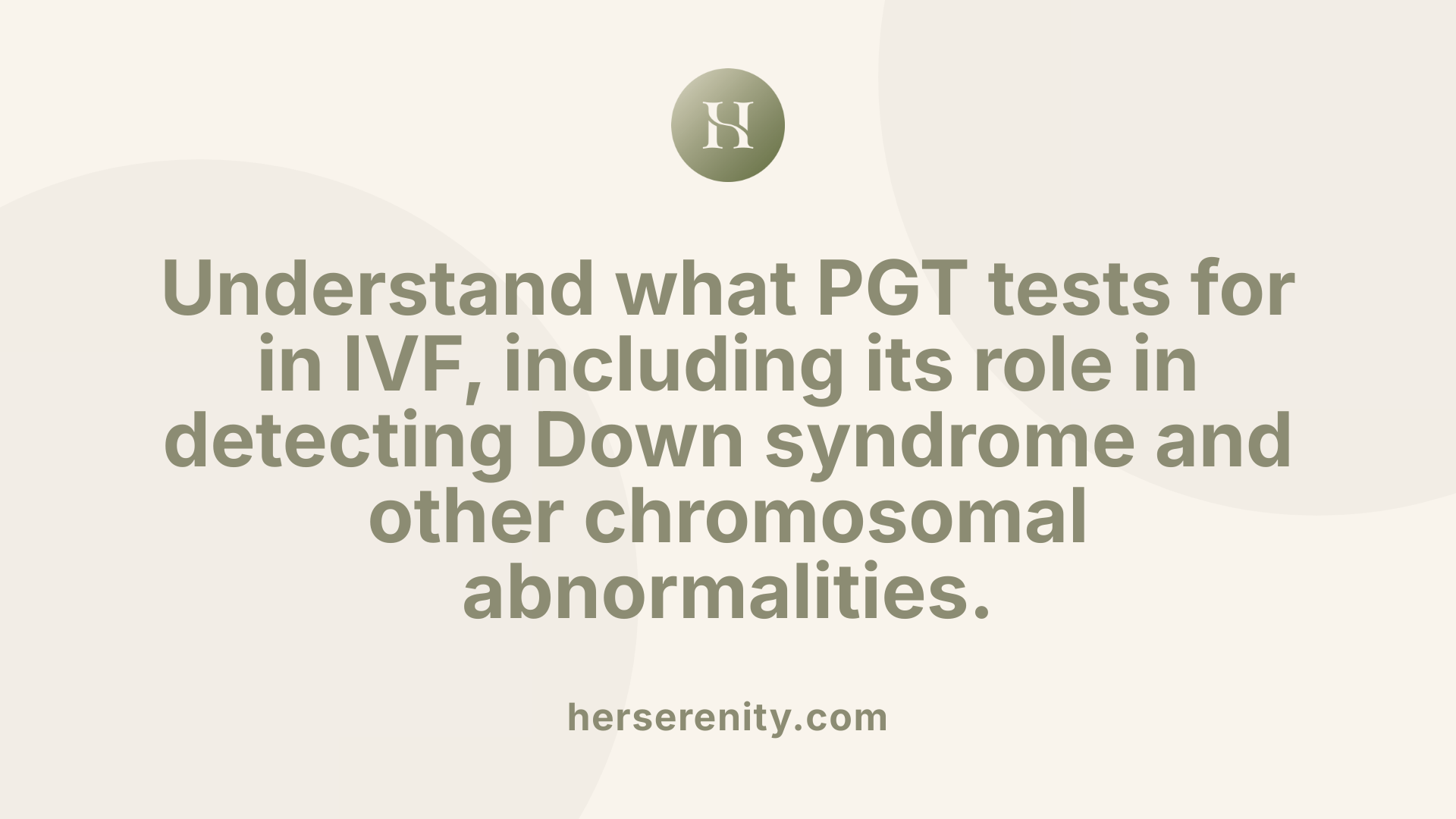
Screening for chromosomal abnormalities
Preimplantation genetic testing (PGT) is primarily used during IVF to evaluate embryos for genetic and chromosomal issues that could affect pregnancy success and the health of the future child. The most common form, PGT-A, screens for chromosomal abnormalities such as missing or extra chromosomes. This process helps identify embryos with a normal number of chromosomes, known as euploid embryos, which are more likely to result in successful implantation and ongoing pregnancy.
The analysis involves taking a small biopsy from the embryo—often at the blastocyst stage (day 5 or 6)—and examining the chromosomes using advanced techniques like next-generation sequencing (NGS) or array comparative genomic hybridization (aCGH). The goal is to select chromosomally healthy embryos, thereby reducing miscarriage risks and increasing the chances of having a healthy baby.
Detection of Down syndrome
A key part of PGT-A is its ability to detect trisomy conditions, including Down syndrome, which is caused by an extra copy of chromosome 21. By identifying this chromosomal abnormality in the embryo, PGT-A helps prospective parents understand whether their embryo has a higher risk of carrying Down syndrome. This screening can significantly lower the chances of miscarriage related to such chromosomal disorders and provide valuable information for family planning.
Limitations of PGT in genetic spectrum
While PGT-A is effective at detecting common numerical chromosomal abnormalities, it does not screen for all genetic diseases or disorders. For example, it does not identify specific gene mutations responsible for hereditary conditions like cystic fibrosis or Huntington’s disease. For families with known genetic disorders, PGT-M (for monogenic diseases) offers targeted testing for particular inherited conditions.
Moreover, PGT-A is a screening tool, not a diagnostic test. This means it can identify the likelihood of a chromosomal abnormality but cannot confirm with absolute certainty whether an embryo has a genetic condition, especially in cases involving mosaicism or complex structural rearrangements.
In summary, PGT in IVF is an essential tool for checking chromosomal normalcy, including detection of Down syndrome, improving pregnancy outcomes by selecting healthier embryos. However, it does not replace comprehensive genetic counseling or testing for inherited single-gene disorders, which may require specialized PGT-M.
What are the success rates and safety considerations associated with PGT?
What are the pregnancy success rates with PGT?
Preimplantation Genetic Testing (PGT) has been shown to enhance the chances of successful pregnancy, primarily by allowing the selection of embryos that are chromosomally normal, or euploid. These embryos have a higher likelihood of implanting successfully and developing into healthy pregnancies. Studies indicate that PGT, especially PGT-A, increases implantation rates and reduces miscarriage rates compared to conventional IVF without genetic testing. For example, in women of advanced maternal age, PGT can help identify the most viable embryos, improving the chances of a live birth. Another beneficial approach supported by PGT is the single embryo transfer (eSET), which further decreases the risk of multiple pregnancies and associated health risks. Although PGT improves outcomes, it does not guarantee success; other factors like uterine health and embryo quality also play essential roles. Overall, using PGT leads to more efficient embryo selection, shortening the time to pregnancy and increasing the probability of a healthy, ongoing pregnancy.
Supporting Healthy Pregnancies through Advanced Genetic Screening
Preimplantation genetic testing (PGT) has transformed fertility treatments by enabling the precise screening of embryos for genetic integrity before transfer. With various types tailored to specific genetic risks, PGT enhances the likelihood of successful implantation, reduces miscarriage rates, and contributes to healthier pregnancies. The continuous advancements in genetic analysis techniques, coupled with understanding of associated risks and benefits, empower couples to make informed decisions during their reproductive journey. While PGT is not without costs and limitations, its ability to support healthier pregnancies highlights its crucial role in modern reproductive medicine, paving the way for safer and more effective fertility outcomes.
References
- Preimplantation Genetic Testing: Its Evolution, Where Are We Today?
- Genetic Testing (PGT & PGS) | UCSF Center for Reproductive Health
- What is PGT-A? And How Does It Support IVF? - Natera
- Preimplantation Genetic Testing for Genetic Diseases: Limits and ...
- PGT/PGS Testing in Long Island, Queens & Brooklyn | RSNY
- Preimplantation Genetic Testing (PGT) & IVF | Pinnacle Fertility
- Live Birth with or without Preimplantation Genetic Testing for ...
- Preimplantation Genetic Testing (PGT) - GIVF Fertility | Fairfax, VA
- Genetic Testing | Reproductive Science Center
- What is PGT? – Piedmont Reproductive



